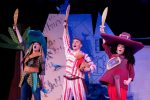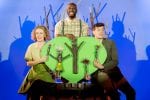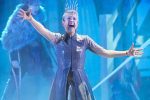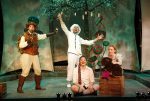What the Ladybird Heard at The Rose Theatre + Interview with Julia Donaldson
I’m pretty sure that most parents and children will be familiar with the awesomely talented, prize-winning author Julia Donaldson. The Gruffalo, Zog, Stick Man and A Squash and a Squeeze are just some of the boy’s favourite bedtime stories. They also love What the Ladybird Heard too which I’m pleased to tell you is coming to The Rose Theatre, Kingston this half-term.
Catch Hefty Hugh and Lanky Len live on stage and see how their cunning plan to steal the farmer’s fine prize cow goes down. I believe a little ladybird has a plan of her very own.
Julia Donaldson chats to us about What the Ladybird Heard book and stage show which is on at the Rose Theatre Kingston from Tuesday 29 May – Sunday 3 June.
Interview with Julia Donaldson
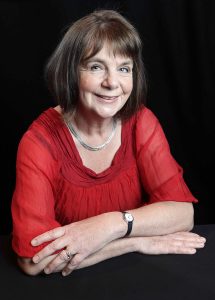
How did the idea for the story of What the Ladybird Heard come about?
I was walking in the countryside with my youngest son and we were reminiscing about when he was a little boy. At an age when children are just learning to read, his teacher had given the class an exercise matching up animal noises with animal pictures, but because most of the children couldn’t yet read, the activity went comically wrong. The hen hissed instead of clucking and the dog meowed and so on. I thought it would be lovely to use this idea of animals making the wrong noises in a story somehow and my son, now a young man, suggested animals playing a trick on the farmer. Then I hit upon the idea of two thieves trying to steal the farmer’s fine prize cow. So, it was quite nice how the story came about really.
What inspired you to work with Lydia Monks on this book? Is there anything about her illustrations and collages that particularly appeal to you?
I’d worked with Lydia before on a couple of books and I knew she liked drawing farm animals. She’s very good at it. I think Lydia’s work is very stylish really. She’s rather inventive and she’s got a tremendous sense of design. I see her very much as a designer in her work and that’s why I’m thrilled she was involved in the design of the stage show [Lydia is design consultant on the show] and I’m really pleased that the set and costumes are very truthful to her illustrations.
And how did you come up with the idea of the Ladybird? One wouldn’t ordinarily associate ladybirds with farmyard animals.
I think the idea of a very little character outwitting bigger and brawnier ones really appealed. And probably the fact that Lady – bird rhymes with heard. [Rhyming is an integral part of Julia’s work].
This is fine of course until the book was published in America, where “Ladybird” becomes “Ladybug”.
I had to change quite a lot for the American version of the book; apparently, police cars don’t go NEE NAWH there.
Would you say the small [voice] outwitting the bigger and louder ones is a common theme in your books?
I suppose some of them yes – The Gruffalo, What the Ladybird Heard and also The Snail and the Whale. I think it’s a very common theme in stories for children and adults. Often, it’s a rather nerdy detective that solves the crime and wins against gangsters or crooks. I did try in Zog though, to make
him the biggest and clumsiest dragon there is, because I think there’s a bit too much little and clever out there.
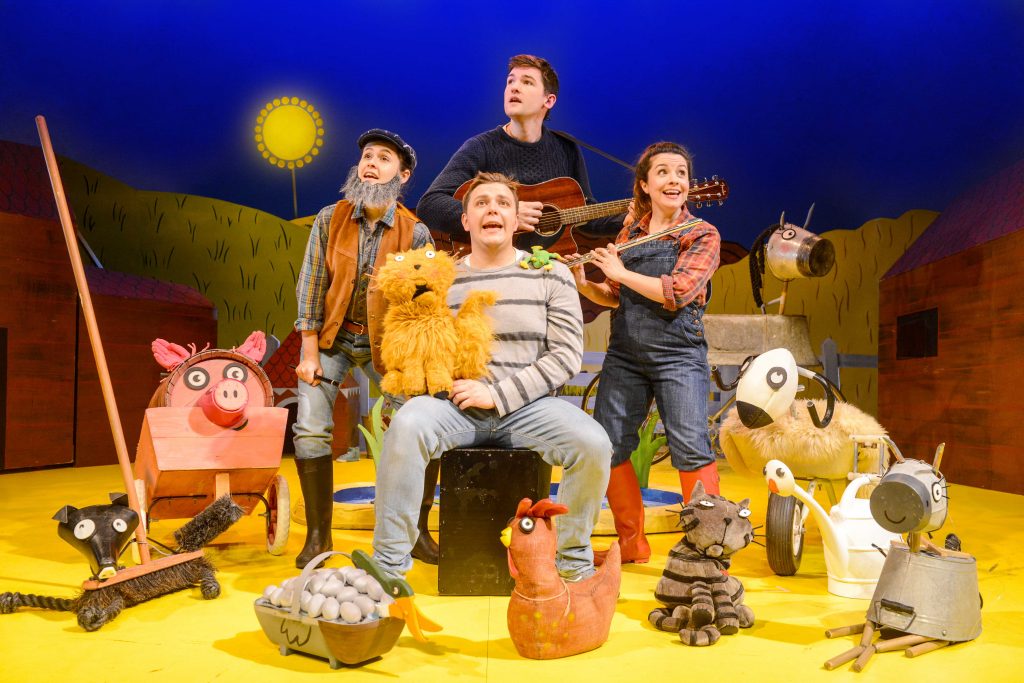
Did you ever consider a different ending for What the Ladybird Heard or did you have a very clear sense of the ending from the outset?
The ending is very important, as I was saying the initial idea revolves around the trick of the animals making the wrong noises, so the story had to lead up to that. I hadn’t thought up the duck pond
initially. Usually, I let my villains off quite lightly. You see them being arrested and I really like the image in the show of the tiny police van leaving the farm, I’m delighted that was worked in.
How does it feel to see your stories come to life on stage?
Exciting and a little scary too. I have one eye on the stage and the other on the audience – to check that they are enjoying it.
Do you sometimes look back to the beginning, to your first book, A Squash and a Squeeze and think about the millions of books you’ve sold since?
A Squash and a Squeeze was published in 1993, I had written it as a song years before, when I was in my twenties and wrote for television. Around the same time as Playschool was on television, there was another ‘Watch with Mother’ programme called Play Board. I wrote songs for the show based on Aesop’s Fables and then came A Squash and a Squeeze. It’s a traditional story and the song went on to be used a lot on children’s television. It’s on a BBC album of children’s songs and was heard by a book publisher who listened to it with her children. Years later, she approached me to write it as a book. So, that’s how I made the jump from writing songs for television to writing books. And now
look where we are!
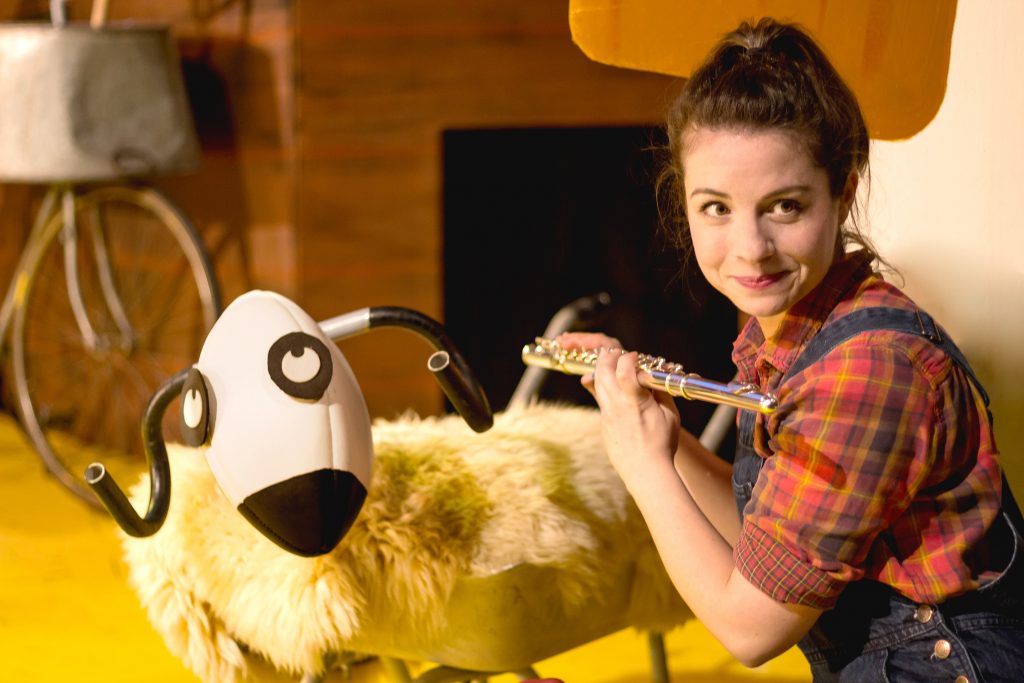
How important do you think it is to have live instruments in this production of What the Ladybird Heard?
I’ve done three books of my own songs with Macmillan publishers and I insisted on real musicians. With each song book, we held a performance – I was singing with about six musicians on stage – I loved that! I still do shows with my husband Malcolm, although he’s often the one persuading me onto the stage these days! I do really like live instruments; it’s a very nice feature of the show as it’s great for children to see and hear live music. In fact, when I started writing for Play Away and
Playschool it was always with live musicians and with Play Away the band was visible on stage. Nowadays, you don’t see so much of that.
What are your favourite parts of the What the Ladybird Heard Stage Show?
I love the songs, the farmer’s song at the beginning is wonderful and the lovely, lively acting set against Lydia’s [Monks] farmyard is a joy.
What the Ladybird Heard will be at Rose Theatre Kingston from Tue 29 May – Sun 3 Jun. Tickets start from £10 and are available online, rosetheatrekingston.org, by phone, 020 8174 0090, or from the Box Office.
There are also some fun activities happening in Bentalls including:
- Fun ladybird trail on the third floor
- Special What the Ladybird Heard themed menu in Restaurant on 3
- Colouring sheets
- Ladybird crafting workshop and a singalong
Don’t miss out and book your tickets for these fun half-term activities.
![[AD] We went to the newly opened Cha Sha Kingston a couple of weeks ago, and wow — taste bud adventure unlocked! The boys devoured the masala fries and chicken tikka rolls, while we couldn’t get enough of that epic kebab butter curry 😍🍛.
It’s amazing value for food this tasty (and everyone left happy and VERY full!).
Delicious food, vibrant vibes and incredible value — the perfect combo for your next meal.
📍Cha Sha Kingston
43 Surbiton Road, KT1 2HG
🌐 chasha.co.uk
Other Cha Sha locations in Birmingham, Ilford, Southampton and Wembkey
#ChaSha #ChaShaKingston #KingstonEats #FoodieFinds #UKFoodie #FoodReview #KingstonUponThames #FamilyEats #FamilyDining #FoodieKids](https://suburban-mum.com/wp-content/uploads/2016/02/574770541_18560351146016840_6855048070839528040_n-180x320.jpg)

![[AD] We’re a cricket-mad family, so we’re buzzing that @thehundred is back this August! 🏏🔥
To get ready, M tried out the official FREE Activity Pack — and it’s brilliant! 🙌
Packed with fun games, creative challenges and sporty tasks, it’s perfect for getting kids hyped whether you’re at home or on the go.
👉Download yours now (link in bio)
@londonspirit @ovalinvincibles #EveryMomentCounts #TheHundred
#EnglandCricket #CricketFamily #TheHundredCricket #LondonBloggers #Cricket #CricketIsLife #kidsfun](https://suburban-mum.com/wp-content/uploads/2022/11/505472555_18531279601016840_7092520074819907569_n-180x320.jpg)



![[AD - Press visit]
We enjoyed the glorious sunshine this weekend with a trip to Brighton. We went on the @brightoni360official which is right by the sea front.
The i360 pod take a slow journey up, allowing you to take in views across Brighton and the South Downs 450ft above ground. There’s a bar inside with drinks and snacks available to purchase and the experience lasts 25 minutes.
Afterwards, we headed to the open air roller rink for a roller skating session!
The roller rink is:
⭐ Suitable for over 5s
⭐ £6.50 if you have your own skates or £9.50 if you need to hire them
⭐ 45 minutes per session
Full details to visit the i360 + skating
📍 Brighton i360, Lower Kings Road, Brighton BN1 2LN
🚗 Parking nearby (we parked in the Regency Square Car park)
🎟️ Prices start from £25.40 for an adult and £16.90 for a child
🕐 Opening hours are currently Sun-Fri 10.30am-18.30pm and until 19.30pm on Saturdays
☕️ Bar inside the i360, cafe and gift shop
Book tickets here:
https://tickets.brightoni360.co.uk/tickets/?_ga=2.195305772.1869001490.1689671753-1757164059.1689671753/#events?eventid=157](https://suburban-mum.com/wp-content/uploads/2015/04/417980235_313576471048632_3682382982231216432_n.jpg)

![[AD] ***Summer of fun at Barracudas Activity Camps!****
There is plenty for kids to do at @barracudas_activity_day_camps
From Tennis, Archery, Swimming, Motor Sports and more you can be sure that there will be something for kids aged 4.5-14. ⚽🏈🥅🎾🏓🏎️🏹🏊♂️🏉
You can book on a day by day basis - so it can fit in with any other days out/activities you have planned and there are early drop off and late pickup options available. Barracudas are also Ofsted registered so you can use your Childcare Vouchers too.
⭐⭐⭐Get £20 off a week or £4 off a day using my discount code: MARIA20⭐⭐⭐
#BarracudasActivityDayCamp #BarracudasActivityCamp #BarracudaAmbassadors #SummerHolidays #SchoolHolidays #Summer2023 #SummerCamp #DayCare #Camp #KidsCamp #surreymummy #surreymums #SummerOfFun #ActivityCamps #HolidayCamps #Childcare #SchoolHolidays #schoolholidaycamps](https://suburban-mum.com/wp-content/uploads/2024/07/353583570_625625966167953_545896259645102575_n.jpg)



![[AD] We have some super exciting news...we have been chosen to be Laser Quest Ambassadors, and the boys are over the moon!
We are really lucky that our local Laser Quest (@laserquestkingston) is just around the corner from us. It means we can pop in of a weekend or anytime during the school holidays, and with summer just around the corner, I know Laser Quest will be one of our go-to places for some family fun.
As well as games of Laser Quest, there are also VR experiences and arcade amusements too. To find out a bit more about how Laser Quest works, you can read my blog post: https://www.suburban-mum.com/laser-quest-kingston/ (clickable link in bio)
Don't forget to keep an eye out for our Laser Quest posts - I'm going to be giving away two family passes to use at Laserquest Kingston!
If you can't wait and want to head down to Laser Quest to try it out, use the code SUMMER30 for 30% off your booking. The code is valid from now until the end of August 2023 and can be used on Laser Quest games and birthday party bookings.
#LaserquestAmbassador #Laserquest #LaserquestKingston #ActivitiesForKids #FamilyFun #DaysOutWithKids #Lasertag #LaserquestVR #Kingston #ThingsToDoInKingston #SurreyFamilyDaysOut #ThingsToDoWithKids #RainyDayFun #SurreyMummy #SurreyLife #LifeWithKids #LifeWithBoys #familyfunday](https://suburban-mum.com/wp-content/uploads/2015/04/353230107_797358078406942_2405522556733455165_n.jpg)

![[AD] The sun has finally made an appearance and the boys have been making the most of it by spending it
in the garden.
They’re go-to is always football and they’ve been trying to improve their aim and accuracy with the new Messi Foldable Footlball goal from the #MessiTrainingSystem range.
I love the fact the goal is foldable, making it easy to store away when not in use. It is also lightweight so you can effortlessly pack it up and take it to the park or to a friend’s house.
The Messi Foldable Football Goal retails at £36 and can be purchased from @argos
You can read my full review here: https://www.suburban-mum.com/messi-foldable-football-goal/
#TrainLikeMessi #FoldableFootballGoal #FootballSkills #OutdoorFun #LionelMessi #LeoMessi #FootballAtHome #OutdoorKids #JustGetOutside #OutdoorsAndFree #ScreenFreeKids #WhateverTheWeatherKids @flair_gp](https://suburban-mum.com/wp-content/uploads/2015/04/341194882_615024710178056_41977149395989448_n.jpg)

![[AD] We are absolutely thrilled to announce that we are Barracuda Ambassadors again this year.
With Easter just around the corner, the boys were sent the @barracudas_activity_day_camps new camp kit in preparation for the school holidays.
There’s a wide range of activities for kids aged 4.5 - 14 including Tennis, Archery, Basketball, Arts & Crafts and more.
If you like the sound of Barracudas, find out more over on their website. You can also save £20 a week or £4 a day, using my discount code: MARIA20](https://suburban-mum.com/wp-content/uploads/2024/07/336812306_765234558514317_685553691647241974_n.jpg)


![[AD - Gifted]
Last weekend we were invited to try out @tsarettaspice’s new Bottomless Brunch menu and I can tell you it was thumbs up all round!
There’s a good choice tapas on offer from Punjabi fish fingers, Indo Chinese Chicken to Spiced Lamb Scotch Eggs and Manchurian Cauliflower (which was amazing!)
If you’re local to Twickenham and fancy giving them a try here’s are the details.
Tsaretta Spice Bottomless Brunch
⭐️£37.50 per head for bottomless Prosecco or cocktail of the day
⭐️£55 per head for bottomless Champagne
⭐️ Food included: 4 tapas selections and dessert or 2 tapas selections, a pav or naanwich and dessert
⭐️ Non-alcohol brunch is also available
Tsaretta Spice
55 Church Street
Twickenham
TW1 3NR
You can also read our full review over on the blog (link in bio)](https://suburban-mum.com/wp-content/uploads/2024/07/334565436_5960402314015030_663031098700829518_n.jpg)
